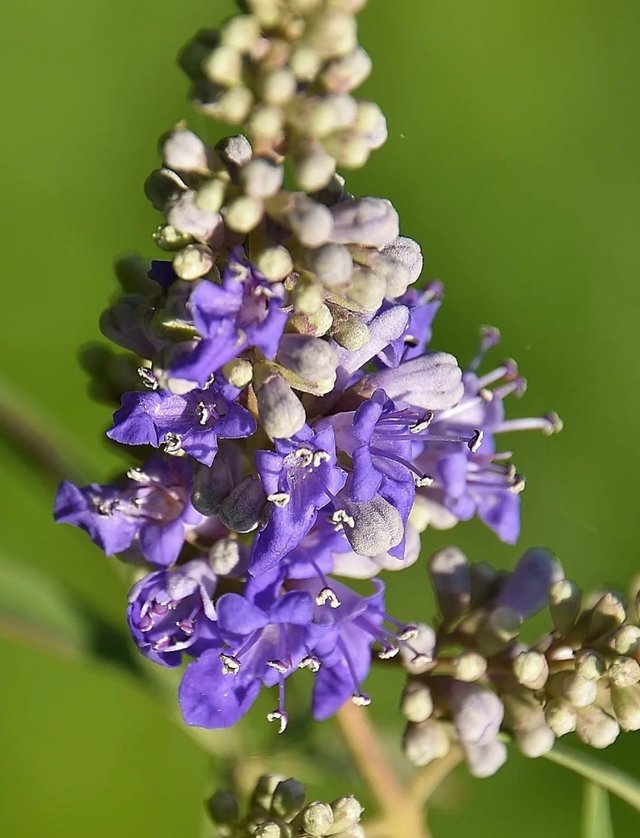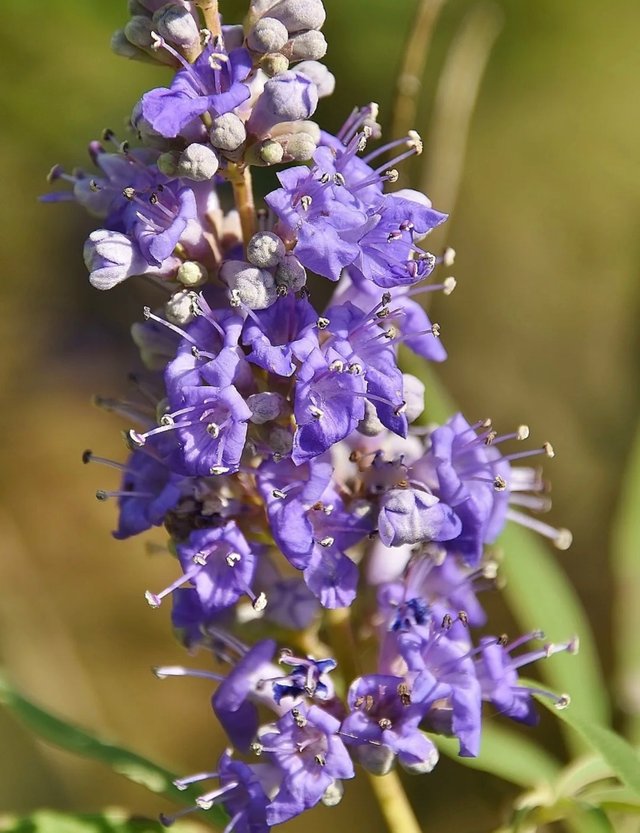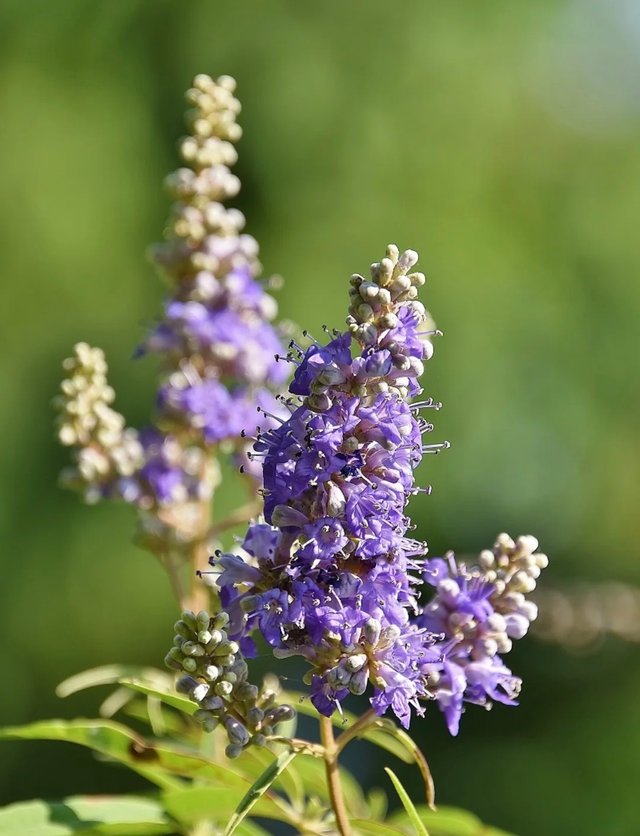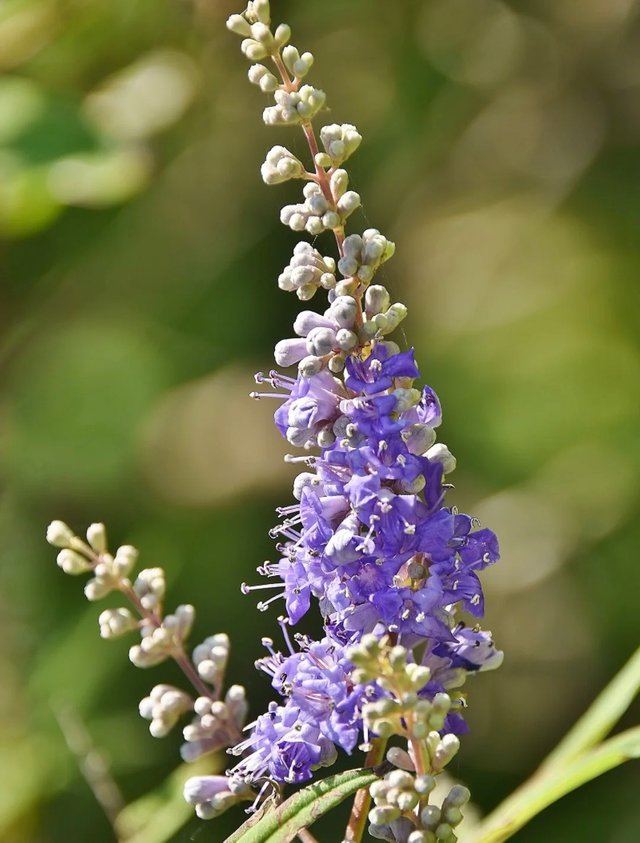Chaste Tree
The Chaste Tree, scientifically known as Vitex agnus-castus, is a remarkable plant that bridges the gap between beauty and healing. Known for its stunning violet flower spikes and centuries-old use in traditional medicine, this graceful shrub is both a visual delight and a botanical powerhouse. Whether you’re a gardener, herbalist, or nature enthusiast, the chaste tree is one plant that deserves your attention.
The chaste tree is prized for its attractive, aromatic foliage and elegant spikes of flowers that draw bees, butterflies, and hummingbirds. Its leaves are palmate, typically divided into 5–7 slender leaflets, giving it a tropical or almost cannabis-like appearance. The flowers bloom prolifically in mid to late summer, and the plant often maintains a rounded, spreading habit.It grows best in full sun and well-drained soil and is surprisingly drought-tolerant once established. It can be pruned into a small multi-trunked tree or kept as a large shrub, depending on your landscape needs.
Chaste tree is a pollinator magnet. Its long-lasting blooms provide nectar for bees, butterflies, and other beneficial insects. In southern regions, it can be an essential food source during the hotter months when other plants may not be flowering.Its strong fragrance and dense branching also make it a natural deterrent for deer in some areas, which can be a bonus for rural or suburban gardeners.



